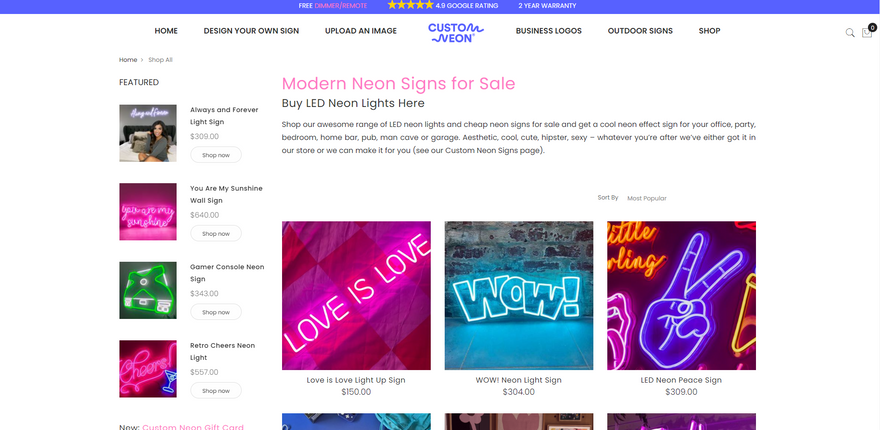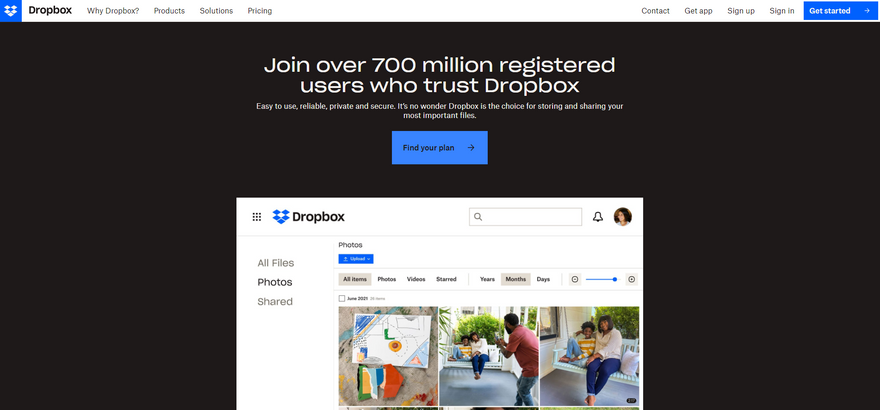How To Rebrand Your Business | Website Builder Expert
If you click to purchase a product or service based on our independent recommendations and impartial reviews, we may receive a commission. Learn more
So, you’re thinking about rebranding your business? It might seem like a mammoth task to take on, and sure, the time and changes involved shouldn’t be taken lightly – but the payoff can be worth it. Rebranding is a case-by-case situation, and you need to make sure it’s the right decision for your business before you dive right in.
Change can be scary. You’ve built a brand online from scratch…will a rebrand push customers away or will it strengthen your connection? Will your sales drop or grow? We want to make sure you’re confident in your choice to rebrand your business.
Whether you want to know how to rebrand your business or you’re on the fence about it, we’re here to help you weigh up the pros and cons! Keep reading for more information about what rebranding is, the benefits and risks involved, and a guide on how to manage it successfully.
What Is Rebranding?
From small businesses to large corporations, no industry is a stranger to rebranding. Every company has a brand – it’s how people recognize who you are and what you stand for.
But at some point, a business might begin to outgrow its current identity and market, or start to evolve into something entirely different. That’s where rebranding comes in. The changes could be as simple as modernizing your visuals, or as huge as updating the very foundations of your business with fresh values and goals.
Why Should You Rebrand Your Business?
Is rebranding the right decision for your business? You might’ve rushed into branding your business when you first started, or perhaps a change in the company – such as updated brand values or entering into a new market – has left the business feeling behind the times.
Whatever the reason, if you feel like your current brand, from the logo to your company vision, doesn’t reflect your business accurately, it might be time to rebrand!
Though it is a big task, rebranding can be necessary if you want to stay ahead and make an impact in your market.

Alli Hill, the owner of Fleurish Freelance, recently decided to combine her marketing and personal business into a single entity to give her “clients and mentees a single resource”. However, in the merge of the two brands, she lost all of her backlink progress: “I feel that I’m starting from zero in many ways, even though I had a well-established online presence before the switch. I’m hoping to play catch up and restore my progress by the end of the year. And I certainly don’t regret the decision – focusing on one brand will allow me to put more time and resources into it and make it better than ever.”
Whether there’s been a change in your company values and mission, or your business is struggling to differentiate itself from competitors, rebranding can come with many benefits for your business. Rebranding your business can help you:
- Stay competitive
- Generic branding won’t help you stand out from the crowd – the overall look of your business can make or break you!
- Modernize the business
- You can’t outshine your competitors with outdated visions, values, or branding. Your brand should accurately reflect your business.
- Solidify brand loyalty
- You need to successfully engage with your customers. Target their needs and pain points to maintain brand loyalty and build trust.
- Target new demographics and markets
- Look to broaden your appeal with new customers and expand or move your business into new but relevant target markets.
- Clarify services and products
- Rebranding is essential if you’re shifting your business to a new path, and customers will need clarity on what it is you offer now.
Ultimately, rebranding a business can only succeed if there’s a legitimate reason for the makeover. Don’t rush into the decision!
The Risks of Rebranding
As we’ve said already, rebranding your business is a big step to take and not a short process by any means. Before we explore how to rebrand a company, we want to advise you about the risks of rebranding so you’re fully prepared for what lies ahead.
There are always risks involved with running a business, but it’s everyone’s desire to avoid them as much as possible!
Jumping the gun and rebranding a company unnecessarily, or without proper preparation, could see you:
- Damage customer loyalty
- You risk confusion with any hasty or out-there changes and it can be difficult to rebuild that trust.
- Lose business
- Rebranding can be costly, and without a solid strategy in place, your existing and potential customers might turn elsewhere.
- Weaken your brand awareness
- If you become unrecognizable or blend in with your competitors, how will customers find you?
How to Avoid Rebranding Risks
Before any rebranding, you should always research your market and audience thoroughly to make sure your choices are based on data in order to maintain customer satisfaction. We’ll discuss this more later!
Rebranding might not be the right step to take for your business if your reasoning behind the decision is lacking. You may want to rethink rebranding if you’re basing the decision on:
- Boredom
- You look at your website and business assets day in and day out. Naturally, things might seem boring to you!
- Minor changes
- You need to be prepared to make substantial changes. If you only have some minor edits to make then you might not need to rebrand your whole business.
- Internal or external crisis
- Rebranding during a crisis can look like a cover-up. Of course, businesses do rebrand to escape these shackles but it’s a risky move to make and one we don’t recommend.
- Low brand awareness
- Rebranding just to boost awareness isn’t sustainable for the long term. You need solid strategies in place to build and nurture connections with your customers.
- Slow business
- Similarly to the above point, there are other routes to take if you want to boost your sales. A rebrand seems excessive to solve this problem!
If you’re looking to shake things up, or you simply want to generate a buzz, it’s time to pause! Stop and think about your customers. Do they feel the same way as you? It’s unlikely they’re as tired of your website as you might be.
Issues that seem overwhelming or unmanageable such as slow sales or poor press could be dealt with in a different way without overhauling your entire brand.
Types of Rebranding
There are two types of rebranding: a partial refresh and a total makeover. Before you launch straight into rebranding your business, you need to identify which one your brand needs. What do you want to change? What needs to be updated?
You might want to make a few tweaks here and there – to your visual branding or adapting your strategies, for example – as opposed to a complete brand identity revamp.
The type of rebrand you choose can be very dependent on the age of your business. There’s more at risk if your business is already well established, meaning a partial refresh can be a safer option. And as a small business, unless there are huge changes to make, a partial refresh might be the best route to take to avoid losing customers.
However, if you need to make meaningful changes like the ones we’ve already discussed, it can be useful to wipe the slate clean and build a new brand!
How To Rebrand Your Business
If you’re sure that rebranding is the right move for your business, we’ve set out seven helpful steps to guide you through the entire process:
1. Redefine Your Brand
Firstly, you need to figure out what your brand stands for:
- What are your business values, mission, and goals?
- How do you plan on achieving them?
- Why are they important to your business?
A rebrand doesn’t have to be just about visuals, but can also be about attitude. For example, Hermes, the courier firm, recently went through a rebrand (it’s now named Evri) in a bid to improve customer experience.
There are a number of core points to think about when redefining your brand:
- Vision – What is your company about?
- Mission – How does your company achieve its vision?
- Values – Your working ethos and business priorities
- Brand Voice – How do you share messages internally and externally?
- Labels – Your business name and slogan
- Visuals – Think logo, imagery, website design, and product packaging
When deciding on what changes to make, ensure they consistently align with your new brand and identity. For some businesses, your name might still reflect your new brand so maybe consider only updating your slogan instead.

Custom Neon knew a big change was needed to help them rank better and grow online. Previously known as Neon Collective, Cofounder Jess Munday said this of the rebrand: “This no-nonsense branding was necessary in order for us to realize our global ambitions. In addition, the keyword name, Custom Neon, combined with a comprehensive SEO strategy, has allowed us to dominate SERPs in an extremely competitive space… We have been so surprised at how much of a catalyst for growth this rebrand has provided!”
The name change really speaks to what the business offers. And with effective plans in place to manage the rebranding, as well as strong communication across its sites and socials, Custom Neon made sure its customers were aware of the changes. It’s a sensible path to take for many businesses!
Advice from the Experts
Top Tip: Don’t forget the little things! Update all relevant paperwork (such as legal documents) and databases, and sort out any trademarks and domain names to guarantee you’re all set for the rebrand. It’s also important to notify all relevant parties of your new name.
2. Analyze Your Competition
It’s all about research. If you’re rebranding because you’re venturing into a new market, or looking to stand out against your competitors, you need the research and data to back up your decisions. Without this, you’ll struggle to stay afloat in your market and your brand awareness could suffer.
Here are some factors to look at when checking out the market space:
- Business models
- Sales and marketing strategies
- Website design
- Product pages
- Customer engagement
Remember, you don’t want to copy others in your desired market. Instead, carve out your own space! If you need further help, check out our article on conducting market research.
3. Understand Your Audience
Alongside analyzing your market and competitors, it’s important you understand your audience and how they might change or grow with the rebranding of your business.
We’ve already mentioned that rebranding runs the risk of losing you loyal customers, but with thorough research into your target audience, you’ll have the data you need to make smart choices. If you’re entering into a whole new market with new products, it can be helpful to build customer personas for your target audience too.
Who are you trying to reach with your rebrand? What other businesses do they connect with? Take a look at who’s engaging with your services and content, and make a note of what your customers enjoy. Alongside the positives, don’t forget to listen to their concerns and opinions to help shape your rebranding decisions.
Advice from the Experts
Top Tip: Engage with your target audience as much as possible! Maintaining a good line of communication will help smooth over the rebranding process.
4. Rebuild Your Brand
You’ve already done the bulk of the workload by this point. You know what needs a refresh and what you want your brand to look like. Now it’s time to implement and test those changes before the big relaunch!
Whether you’ve opted for a partial refresh or total makeover, the rebranding of your business will involve lots of visual changes.
Work through your platforms and brand assets – from your website to social media, from email design to product packaging – and adopt your new appearance. Think color palette, typography, fresh imagery, and new branded graphics.
If you want to build a new website for your exciting rebrand, take a look at our best website builders to find the perfect fit for your future journey.
With your previous research and brainstorming sessions, your design choices should be impactful and accurately reflect your new brand. It’s great if your new visuals, including large changes such as your logo or little tweaks to business cards, provide your business with a consistent look and feel. This can boost your brand awareness and help to grow your business, which is especially important following a rebrand.
Advice from the Experts
Top Tip: We recommend timeless designs for your brand visuals. You want to stand out and be memorable for the long-term, so try and avoid passing trends because they might appear outdated after a short amount of time!
5. Create New Marketing Strategies
Now that you’ve locked in your new business vision and values, and have gathered all the market and audience research, it’s time to set up effective marketing strategies to ease the transition from old to new.
Having solid strategies and brand rules in place will help you avoid messy appearances. If done correctly, you should be able to minimize confusion and maintain customer loyalty.
Rebranding your business is a big step and one that needs to be communicated effectively with your consumers. Anticipate what questions they might have ahead of the launch, and be prepared with simple but clear explanations. You want your customers – old and new – to support the change!
Here are some of our favorite ways to communicate the rebranding process:
- Social media
- Email marketing
- Newsletters
- Website elements
- Ads
- Promotions in your local area
You don’t need to implement them all, but it’s better to prepare your customers as much as possible. With warning, the rebrand should hopefully have a minimal effect on existing business, and won’t prove too costly towards your brand recognition.
Further Information
Check out our guide on how helpful a content marketing pyramid can be for your business, and how you can create your own content marketing strategy and framework.6. Launch Your Brand
It’s showtime! With all the elements of the previous steps in place, you’re ready to go. However, before you take a bow, you need to monitor the audience’s reaction.
Have you successfully communicated the rebrand with your customers? With the post-rebrand strategies in place that we talked about above, your target audience should be fully prepared for the change.
Be open and available for conversations with your audience to explain your reasoning behind the rebrand and why you think it’s the best step forward for your business. Customers appreciate honesty, and having channels for discussion will only boost feelings of trust and loyalty.
Advice from the Experts
Top Tip: To help communicate the launch, it can be useful to have a special sale or discount running at the same time to engage more customers!
7. Gather Feedback
Following the launch of your new brand, connect with your customers for feedback to gauge how they feel about the changes. Highlight successes and note any improvements to be made to maximize customer satisfaction.
We recommend asking customers for reviews, adding feedback forms for customers to fill out post-sale, or you could engage with them directly via social media. These can give you great insight into their thoughts on the matter!
Additionally, it’s important to check out any analytics on your website and across various platforms to see if the rebranding had any effect on the business. It can take time to see substantial growth or improvement, so don’t be discouraged if you don’t see a huge change straight away!
Checking in with your audience and monitoring the data is simply a great way to keep an eye on the situation, and provides you with opportunities to adapt quickly to any concerns or hiccups.
Examples of Successful Rebrands
1. Dunkin’

At the start of 2019, Dunkin’ Donuts dropped the “Donuts” – from its name, not its menu! – and officially rebranded to Dunkin’ to shift the focus towards serving coffee quickly. The rebrand was a resounding success! Consumers had already been referring to the business by its new shortened name for a long time, and the company clearly listened. The rebrand felt comfortable and familiar – but also fresh. With new styling and menu offerings, Dunkin’ refreshed its brand to stay current while still remaining true to its legacy.
2. GoDaddy

GoDaddy, originally created in the 90s, received a rebrand decades later in 2020 to reflect the needs of its present users and step away from an outdated appearance. The makeover focused on targeting the “everyday entrepreneurs” – GoDaddy’s key audience – and embraced a modern and trendy design to entice new customers. The main push of the rebrand introduced “GO”, a helping hand for its go-getter users to empower and support their business growth.
3. Dropbox

Dropbox is the perfect example of a business that evolved with the needs of its users, revamping its identity from a basic file storage website to its new position as a collaborative space and content-sharing platform. Its 2017 rebrand – featuring a new logo and dynamic brand assets – elevated its original purpose with the addition of more tools and integrations to make it easy for both personal and professional use. Dropbox now offers various subscriptions for both families and businesses in an effort to connect people, allowing users to both sign documents and share holiday pics in one place!
Examples of Rebrand Failures
1. WW / WeightWatchers

In an effort to align with the wellness industry, WeightWatchers gave itself a makeover in late 2018, but it soon found itself reverting back to its original brand after customers were left confused. The new name of WW (which isn’t very catchy!), and shift in vision wasn’t communicated clearly to its users, resulting in messy messaging and an unclear brand. With such an established business, you really have to strike a balance between inviting new customers and retaining existing users.
2. Tropicana

The iconic drinks company updated its branding in 2009 in an attempt to revamp a bestselling product within the North American market. However, Tropicana quickly backtracked after customer outcry and loss of business. Unfortunately, the business didn’t realize the strong connection customers had with the familiar-looking brand. The changes made Tropicana unrecognizable on the shelf – unlike the Dunkin’ rebrand which retained some features to satisfy loyal customers – and Tropicana has made sure to remain faithful ever since.
3. Facebook / Meta

Though Facebook has the resources to make this grand change and can afford to make such risky moves, the company’s transition from its established name to Meta hasn’t really caught on with the public. The underwhelming rebrand was partly to cover up various controversies, and partly to announce the future direction of the business – however, the bad press continued, and users haven’t connected with the change.
Don’t worry, though – with the advice we’ve offered throughout this article, you’re sure to avoid these same rebranding mistakes. As a reminder:
- Make sure it’s the right decision for your business
- Identify the changes to your brand
- Analyze your competitors and market
- Understand your target audience
- Rebuild and redesign your business
- Create and implement new marketing strategies
- Communicate effectively with your customers
- Gather feedback post-launch
Summary
Remember, choosing to rebrand doesn’t mean your current business is failing! Businesses evolve and adapt with time, so it’s important to keep growing too. This is the perfect time to perfect your brand’s archetype as well. However, as we’ve seen, rebranding your business is a big job and won’t be a fit for every company so make sure you’re doing it for the right reasons.
Once you’ve decided on rebranding, and to what degree, follow our step-by-step guide to see the process through successfully and minimize any risks! We would love to hear how you get on with your rebrand, so do come back and leave us a comment with your story.

Leave a comment